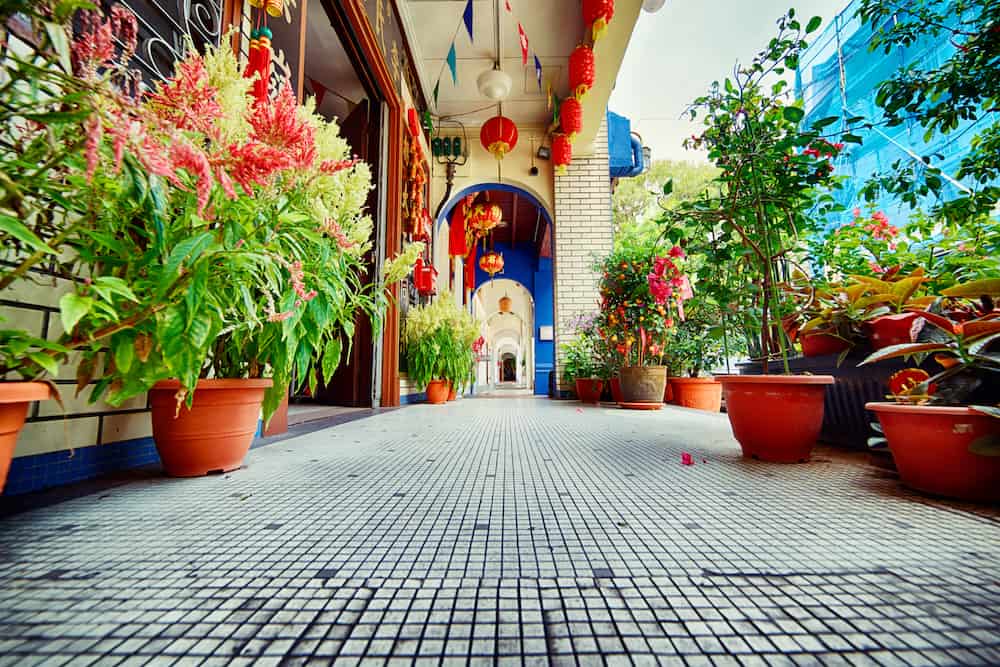It’s almost time to ring in the year of the Wood Dragon and roll-out the firecrackers and lion dancers. But before you overdose on pineapple tarts and start counting your ang pao cash, we wanted to share some #LittleGreenSteps to make this Chinese New Year both prosperous and conscious. Gōng Xǐ Fā Cái, Hóng Bāo Ná Lái.
What’s not to love about Chinese New Year? This year, while you’re gathered around the family reunion tables, spare a thought for the impact our actions have on ourselves and the environment. Because at CNY, the waste stats get ugly.
Red packets: Red hot mess
It ain’t Chinese New Year without red packets. But according to Greeners Action (a Hong Kong based charitable environmental group), since 2014 more than 16,300 trees are used each year to exchange 320 million red envelopes over CNY. And that’s just in HK. Add Singapore (not to mention mainland China!) into the mix and, well, you do the maths.
Food glorious food
Holidays revolve around food. Fact. But the rate at which we’re consuming is beyond indulgent. According to the National Environment Agency (NEA), Singapore wasted approximately 636,900 tonnes of food in 2018. And During the Chinese New Year period, food waste increases by up to 20 per cent. Yikes. So what happens to all the leftovers? Food waste in Singapore goes to either a landfill to decompose or to an incinerator. But it’s not out of sight, out of mind; landfills emit methane over time, which is 23 times worse than carbon dioxide. While incineration requires large volumes of energy to produce a net-energy gain that is low or non-existent. Or, we could consume less; it’s simple, really.
The dirty secret behind spring cleaning
We’re all for decluttering; it’s good for the soul. And the new year is a perfect time to whip out your feather duster. Though traditionally the annual spring clean is all about sweeping away bad luck, we may just be sweeping away the bad luck to our landfills. In 2018, we produced 205,800 tonnes of textile waste (all the clothes!). Singapore’s four waste-to-energy (WTE) incineration plants are already handling up to 7.6 million kg of trash a day. And the Semakau Landfill is expected to be filled up by 2035 – a decade sooner than the original 2045 projection.
#LittleGreenSteps
So what can we do differently this Lunar New Year? Here’s the #LittleGreenSteps we’ll be taking to keep the year of the wood dragon conscious.
1. Green your red packets or give e-Ang Paos
One quick way to save the trees is to reuse the ang paos you received last year. If you threw them out already, fret not. Just save any leftover or reusable red packets from this year for 2025 (Say what?! We’re almost half-way into the 2020s?!).
Alternatively, look to custom make ang paos from recycled or FSC paper. The Forest Stewardship Council (FSC) promotes the practice of sustainable forestry worldwide. It ensures all paper is sourced in an environmentally-friendly and socially responsible way.
Got leftover red packets that you don’t know what to do with? No need to head over to Chinatown this year to get your Lunar New Year decorations, instead get creative with your old festive red packets. Here are a few crafty upcycling ideas to inspire. Alternatively, you could also send your ang paos for recycling. OCBC and DBS are collecting red packets to be recycled—simply drop them off at any of the OCBC, DBS/POSB branches.
Here’s a pro-tip: give an e-Ang Pao instead. That way you totally avoid any wastage!
2. Donate any leftovers to reduce food waste
There are a few non-profit organisations in Singapore that will distribute excess food to those who need it. The Food Bank Singapore collects unused food products from families, eateries, restaurants, hotels, and manufacturers who wish to donate to nursing homes and family service centres. Food from the Heart accepts donations of non-perishable food items and distributes them to welfare organisations, families in need, and individuals.
3. Sustainable Yú (Fish)
Seafood is a staple during Chinese New Year, but how do you know if your Lo Hei and other reunion dinner delights are sustainable? #KnowYourSeafood and check the WWF-Singapore Seafood Guide before doing your grocery shopping. Equally, human trafficking is rife within the fishing industry. It’s estimated that 10% of commercial fisherman work under conditions that classify them as slaves. It’s a harrowing watch, but The Ghost Fleet is an eye-opening insight into the fishing trade in Southeast Asia. If that doesn’t make you question where your fish is from, we don’t know what will.
4. Give your old stuff a new life
One man’s trash is another man’s treasure; find new homes for your stuff. There are plenty of places to donate too, give away for free, sell or event recycle your items. From clothes, furniture, electronics, toys, books – you name it there is most likely a place to dispose of it properly. Yes it may take a little more effort, but it is worth for the planet and for those communities who might be less fortunate than you.
5. New year, new wardrobe
Fashion is the world’s second most polluting industry. Now, we know that wearing new clothes from head to toe symbolises a new start and fresh hopes for the New Year. But exploring more conscious choices doesn’t mean you need to compromise on the chic factor. Have a read of our conscious how to dress guide for the lowdown on renting, swapping, and sustainably shopping.
And if you are struggling to talk to your family about why all of this and climate change matters, this may help.


